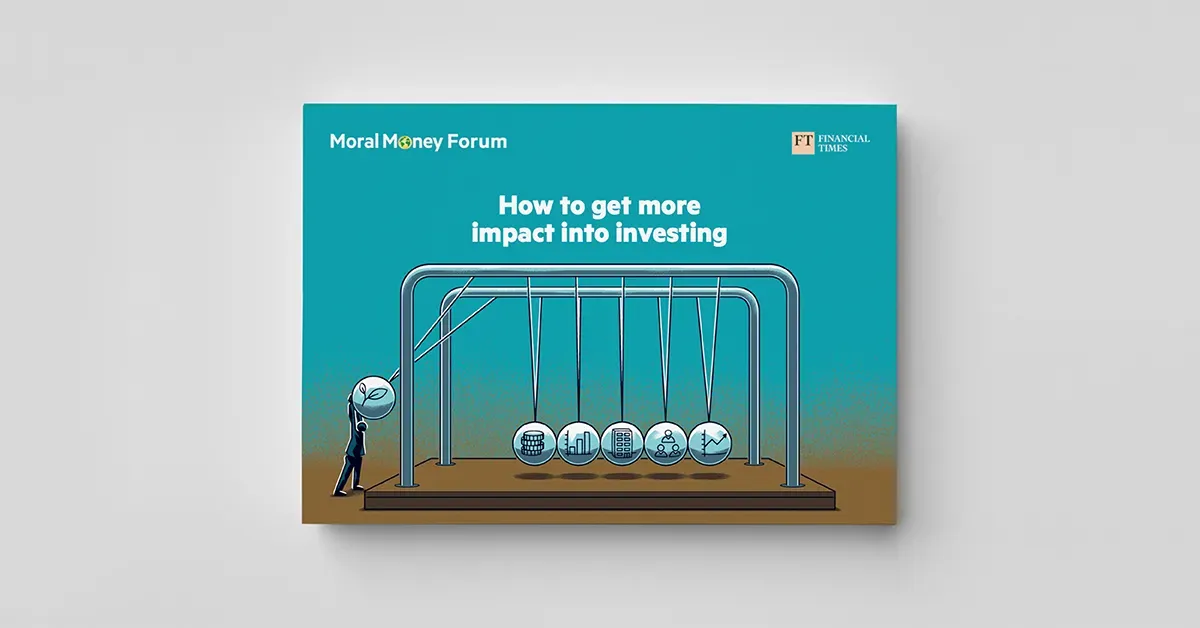Embracing the potential of impact investing in public markets
Asset management
Impact investing originated with philanthropists and then ethical investors who were primarily focused on “doing good.” But to truly effect change and attract the required amount of investment, impact investing needs to broaden its scale and genuinely appeal to as wide an investor set as possible. This can and will be best achieved whenever ethical outcomes do not come at the expense of financial performance, but in addition to it. At Vontobel, we refer to this as investing for a double dividend. The investment universe also needs to expand from private assets in select sectors to include global listed equities to allow for scale.
As the investor base expands, credible and universally accepted metrics are required to maintain the integrity of impact investing. As a member of the Global Impact Investing Network (GIIN) since 2020, Vontobel has actively contributed to the working group that sets strict global guidelines for this approach in public equities. This is critical since impact investing still lacks full uniformity in both terminology and data. The importance of reliable data cannot be overstated as it ensures that investments deliver measurable real-world results. As a fiduciary, we believe in transparency and regularly publish impact reports that detail our full methodology, assumptions, and any limitations of our framework.
Regulation is not a panacea
There is a widespread perception that investing into businesses making a legitimate positive impact can only be profitable if supported by a change in regulation or policy. This rationale is widely held for good reason: businesses striving for positive impact often repair what public services are not in a position to adequately address or provide a novel service focusing on a yet unserved societal need. In the absence of policy support, these businesses would often face too high an entry barrier, in terms of costs or size of the initially addressable market, making it difficult to compete with “traditional” businesses and thus to get the new service off the ground.
However, once the conditions for a new market are established – or a path for market substitution is clearly communicated to investors – the influence of regulation and policy diminishes. In some cases, it can even generate an adverse effect by stimulating supply beyond demand, weighing on profitability. Many segments of renewable energy faced similar challenges over the last 18 months.
This dynamic becomes particularly relevant in the context of changing political landscapes. Some investors are concerned that a halt or even a reversal of previous climate friendly government policies will have a detrimental influence on the future returns of impact investments. While this may be true for some investments, there are mature segments of the market where the convergence of production costs and scale has already occurred, making them less dependent on policy support or economic conditions.
The climate transition: leveraging a long-term structural shift
Impact investors typically have a deep-rooted commitment to the secular shift of the economy towards a more sustainable future as laid out in the globally ratified objectives of the Paris Agreement, the Kunming-Montreal Global Biodiversity Framework, and the UN’s Sustainable Development Goals. As governments and private entities adopt targets set by these global accords, demand for advanced infrastructure is poised to accelerate, especially for decarbonization and sustainable urban planning. This sets the stage for fertile investment opportunities in impact strategies.
A groundswell of support has already created a healthy foundation to capitalise on these opportunities. Investments in low-carbon energy transition technologies surged 17 per cent to a new annual record of $1.77tn in 2023. Global energy transition investments also outpaced fossil-fuel supply investments by nearly $700bn that year.1 However, capital directed towards a more resource-efficient energy transition still needs to increase significantly. It is estimated that the global annual investment to achieve net zero climate targets by 2050 represents an approximate $200tn accumulated opportunity — the equivalent of about 2 percent of annual global GDP.2 This forecasted investment level suggests substantial inflows into the target universe of impact strategies.
Many clean solutions are attractive and cost competitive investments, regardless of policy support, incentives, or subsidies. Both established and disruptive companies that leverage climate change can provide innovative and scalable technologies that address major global issues, such as depletion of resources or rising pollution. These companies have the potential to outperform their peers and gain market share, particularly if they possess robust balance sheets and superior long-term profitability.
Targeting a double dividend
At its core, impact investing is about targeting a double dividend. Given the estimated needs for transition and green financing, we believe that the success of impact investing in public markets is critical to achieve the necessary scale. To ensure a growing adoption of impact strategies, it is imperative that investment managers deliver measurable impact and at least equivalent performance through the cycle compared to “traditional” strategies.
For investors, the critical consideration becomes the trade-offs they are willing to accept between short-term deviations from market performance in exchange for long-term gains. This willingness could expand the appeal to a wider range of investors, thereby strengthening the positive impact on both the environment and society.
1. Source: BloombergNEF, “Energy Transition Investment Trends 2024”, January 2024
2. Source: BloombergNEF, “Net Zero Investments”, May 2023



